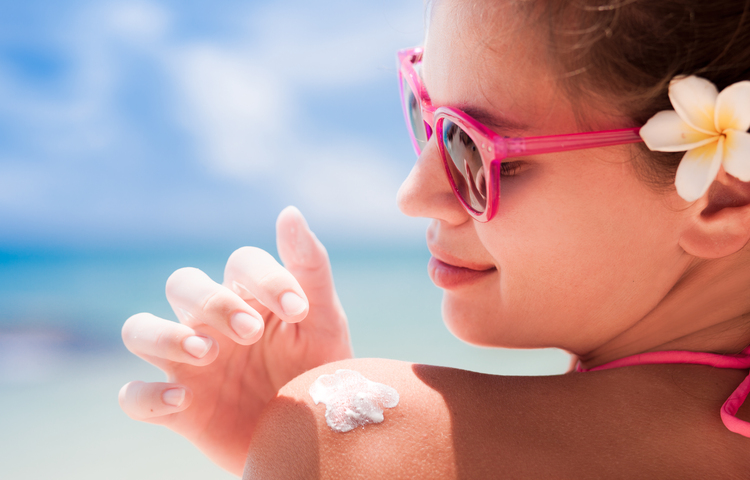A recent social media uproar has raised questions about the safety of sunscreen, with some brands asserting that traditional products pose health risks. One such controversy erupted when a brand promoting its “non-toxic” sunscreen claimed in a video that conventional sun creams are toxic and can enter your bloodstream within 26 seconds. This was followed by a promotion of the owner’s own sunscreen, which is made from ingredients like organic beef tallow and jojoba oil, offering minimal sun protection.

(image: getty image)
Faced with personal experiences of skin cancer in my family, I felt the need to counter these misleading claims, stating, “This video spreads dangerous misinformation.” Engaging in the online debate was intense, filled with responses that ranged from calls for better research to accusations about corporate greed.
This incident highlights a growing mistrust in the pharmaceutical industry regarding sunscreen safety. To address these concerns, I consulted experts to determine if these fears about sunscreen toxicity are valid. Here’s what they revealed:
Your Skin Functions as a Barrier, Not a Sponge
Pam Marshall, a Clinical Aesthetician at Mortar and Milk, emphasizes the need to prioritize toxins we consume or inhale over those we apply topically. “The journey from the surface of the skin to the bloodstream is nearly impossible,” she explains. “The epidermis acts as a waterproof barrier, shielding us from environmental factors. For any ingredient to penetrate the skin, it must possess a low molecular weight and pH—attributes that most products lack.” Marshall advises focusing on consuming organic foods and minimizing pollution exposure, highlighting that avoiding all toxins in cosmetics is unrealistic when food and water are rife with pesticides and hormones.

(image: getty image)
The Threat of Skin Cancer Outweighs Toxicity Concerns
Cosmetic scientist Sam Farmer points out, “Skin cancer is the fastest-growing and most prevalent cancer in the UK. Approximately 2,300 individuals die from melanoma each year, with over 90% of cases linked to sun exposure.” He stresses that sunburn, which results from UVB rays, dramatically increases the risk of developing skin cancer. Using an SPF 50 sunscreen can block around 98% of these rays, reinforcing the importance of sun protection over potential toxicity of sunscreen ingredients. Dr. Catherine Fairiss, Director of the Wessex Skin Clinic, reinforces this view, stating, “The risk of developing skin cancer without sunscreen significantly surpasses any potential risks associated with its use.”

(image: getty image)
Debunking the Myth of Sunscreen’s Role in Rising Cancer Rates
Skeptics often argue that the rise in skin cancer coincides with the increased availability of sunscreen, implying a direct link. This perspective fails to consider advancements in diagnosis and the cultural shift towards tanning. Dr. Georgina Williams, a consultant plastic and reconstructive surgeon, highlights that sun damage has been linked to skin cancer since the 1920s. She attributes the rising incidence of skin cancer to the growing popularity of tanning, particularly among fair-skinned individuals who frequently expose themselves to high levels of UV radiation. Furthermore, the increased use of tanning beds has led to higher skin cancer rates, with usage among American adults rising from less than 1% in the late 1980s to 75% by 2010.

(image: getty image)
Understanding Mineral and Chemical Sunscreens
Dr. Yusra Almukhtar of Dr. Yusra Clinic explains that there are two main categories of sunscreens: mineral and chemical. Mineral sunscreens contain ingredients like zinc oxide and titanium dioxide, which are generally regarded as safe and work by reflecting UV light. Chemical sunscreens, on the other hand, absorb UV rays and convert them into heat. Some chemical ingredients have raised concerns as potential endocrine disruptors, but Dr. Almukhtar emphasizes, “There’s no solid evidence indicating that these chemical concentrations in sunscreens are harmful to human health.”
The essential takeaway? The best sunscreen is one that you will apply regularly, whether it’s mineral or chemical.

(image: getty image)
The Importance of Context
The notion of toxicity can often be misconstrued. Just as we don’t feel the Earth spinning at 1,000 miles per hour, the presence of specific ingredients in products doesn’t necessarily signal danger. According to Farmer, “Toxins are naturally occurring and can become harmful only at certain concentrations. Even common substances like water and oxygen can be toxic in large amounts.” Dr. Sophie Shotter, an aesthetic doctor, adds, “Most concerns arise from studies conducted at elevated concentrations in animals, which don’t translate directly to humans.”

(image: getty image)
Make Informed Choices for Skin Protection
While the debate surrounding sunscreen safety persists, expert consensus is clear: using sunscreen is crucial for protecting against skin cancer. The risks associated with unprotected sun exposure far outweigh any uncertainties regarding sunscreen ingredients. By educating ourselves about the types of sunscreen available and understanding the genuine risks, we can make informed decisions for our skin’s health.
Stay aware and choose wisely to ensure your skin is well-protected while enjoying the sun responsibly.


